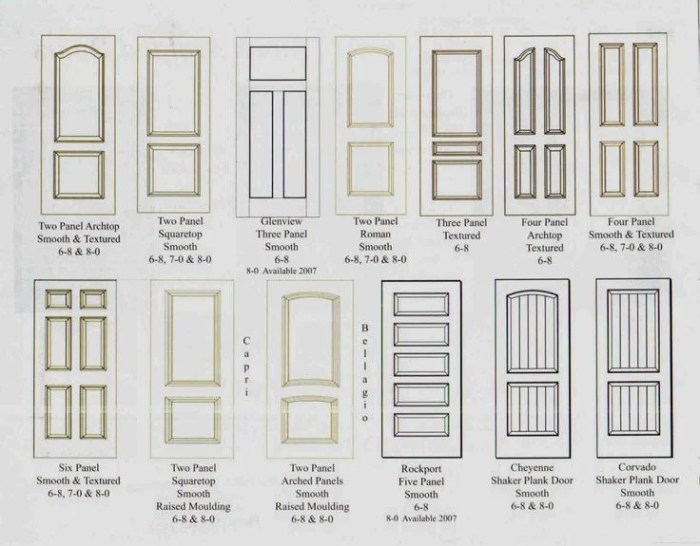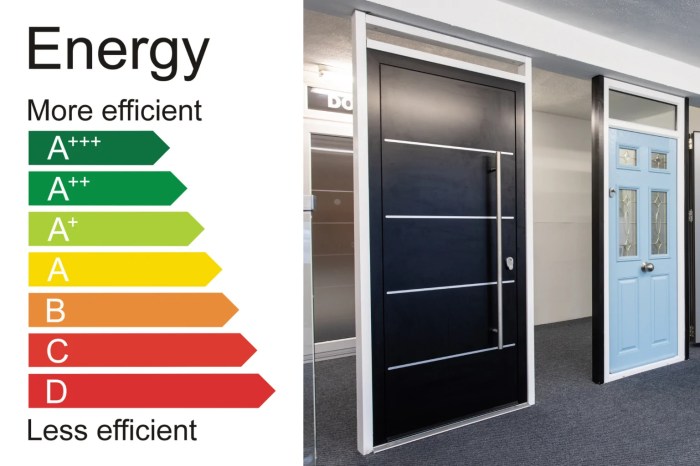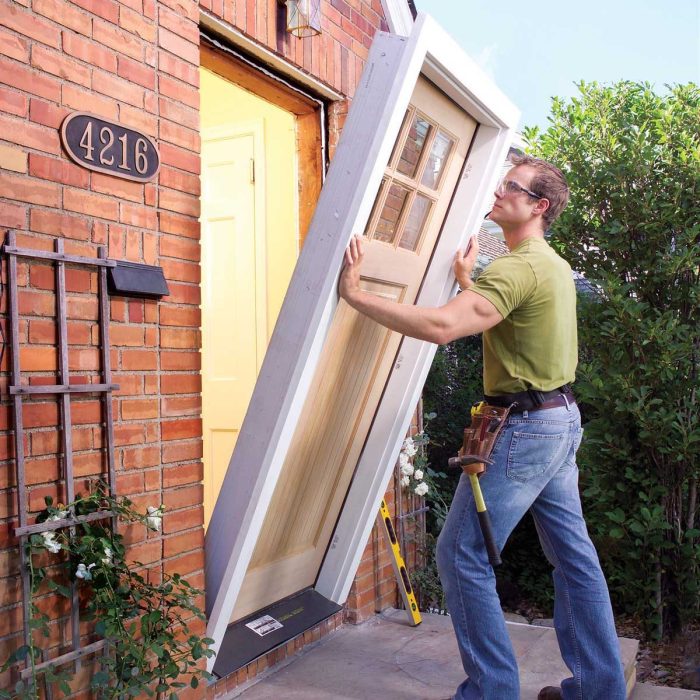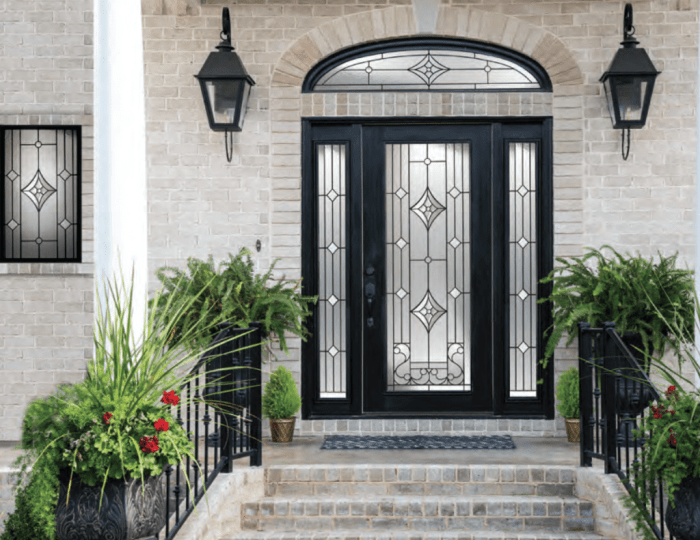Best Front Door Materials for Long-Lasting Performance
Exploring the realm of front door materials, this article delves into the key factors that influence durability and aesthetic appeal. From wood to steel, discover the best options to ensure your front door stands the test of time.
Front Door Material Options
When it comes to choosing a material for your front door, there are several options to consider. Each material offers its own set of advantages in terms of durability, aesthetic appeal, and maintenance requirements.
Wood
Wood is a classic choice for front doors, known for its timeless beauty and natural warmth. While wood doors can be more susceptible to warping and rotting, proper maintenance can help them last for many years. Regular painting or staining is essential to protect the wood from the elements.
Fiberglass
Fiberglass doors are a popular choice for homeowners looking for a low-maintenance option with excellent durability. These doors can mimic the look of wood while offering superior resistance to dents, scratches, and moisture. Fiberglass doors typically require minimal upkeep, making them a practical choice for many households.
Steel
Steel doors are highly durable and offer excellent security for your home. They are resistant to warping, cracking, and rotting, making them a long-lasting option for front doors. While steel doors can be prone to dents and scratches, they are relatively low-maintenance and can be painted to match your home's exterior.
Iron
Iron doors are known for their elegant and ornate designs, making them a popular choice for homeowners seeking a grand entrance. While iron doors are incredibly sturdy and secure, they can be susceptible to rust if not properly maintained. Regular painting and protective coatings can help prevent rust and keep an iron door looking beautiful for years to come.
Factors Influencing Longevity
When considering the longevity of front door materials, various factors come into play that can impact the durability and performance of the door over time. Factors such as climate conditions, direct sunlight exposure, moisture, humidity, temperature variations, and geographic location all play a crucial role in determining the best front door material for long-lasting performance.
Climate Conditions
Climate conditions can heavily influence the choice of front door materials. For example, in areas with extreme temperatures, materials like fiberglass or steel may be more suitable due to their durability and resistance to warping or cracking. On the other hand, in regions with high humidity or frequent rain, materials like wood or composite doors may require more maintenance to prevent rot or water damage.
Direct Sunlight Exposure
The impact of direct sunlight exposure on different door materials can vary significantly. Materials like wood may fade or warp when exposed to prolonged sunlight, while fiberglass or steel doors are more resistant to UV rays and maintain their color and shape over time.
Considering the amount of sunlight your front door will receive is crucial in selecting a material that can withstand such exposure.
Moisture, Humidity, and Temperature Variations
Moisture, humidity, and temperature variations can affect the longevity of front doors, especially in areas prone to extreme weather conditions. Wood doors are particularly susceptible to swelling or rotting in humid environments, whereas fiberglass or steel doors offer better resistance to such elements.
It is essential to choose a material that can withstand these fluctuations to ensure the longevity of your front door.
Geographic Location
The geographic location plays a significant role in selecting the best front door material. For instance, coastal regions with high salt exposure may require materials that are corrosion-resistant, such as fiberglass or stainless steel. In contrast, areas with heavy snowfall or ice may benefit from materials that offer better insulation, like wood or insulated steel doors.
Considering your specific geographic location can help determine the most suitable material for long-lasting performance.
Maintenance Tips for Long-Lasting Performance
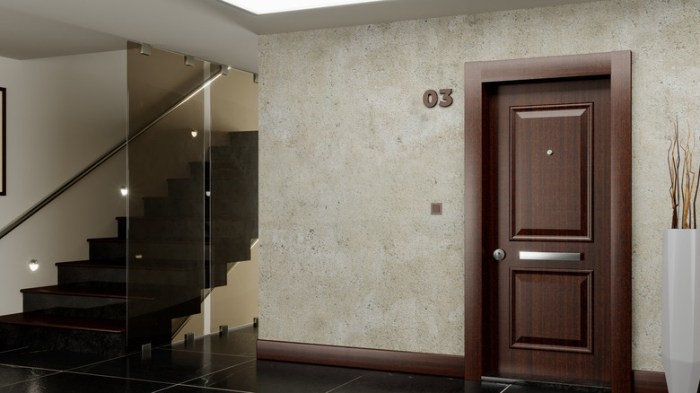
Proper maintenance is key to ensuring the longevity of your front door. Here are some essential tips to help you maintain different types of front doors.
Maintenance Tips for Wooden Front Doors
- Regularly inspect for any signs of wear, cracks, or peeling paint.
- Apply a fresh coat of paint or sealant every few years to protect the wood from moisture and sun damage.
- Keep the door clean by dusting regularly and wiping with a damp cloth when needed.
- Avoid using harsh chemicals or abrasive cleaners that can damage the wood finish.
- Consider applying a wood preservative or protective finish to enhance durability.
Recommended Cleaning Methods for Fiberglass Doors
- Use a mild detergent mixed with water to clean the surface of the fiberglass door.
- Gently scrub with a soft-bristled brush or cloth to remove dirt and grime.
- Rinse thoroughly with clean water and dry with a soft towel to prevent water spots.
- Apply a coat of automotive wax to protect the finish and keep the door looking new.
- Avoid using abrasive cleaners or tools that can scratch or damage the fiberglass surface.
Protecting Steel Doors from Rust and Corrosion
- Regularly inspect the door for signs of rust, especially in areas with scratches or dents.
- Remove any rust spots using sandpaper or a wire brush, then apply a rust-inhibiting primer and paint to seal the area.
- Keep the door clean by washing with a mild detergent and water, then dry thoroughly to prevent water buildup.
- Apply a coat of automotive wax or metal polish to protect the door from moisture and oxidation.
- Consider installing a storm door or canopy to provide extra protection from the elements.
Guide on Maintaining Iron Front Doors
- Regularly inspect the door for signs of rust or corrosion, especially in humid or coastal areas.
- Remove any rust using a wire brush or sandpaper, then apply a rust converter to prevent further corrosion.
- Clean the door with a mixture of mild soap and water, then dry thoroughly to prevent water damage.
- Apply a coat of metal primer and paint to protect the iron surface from the elements.
- Consider applying a clear sealant or wax to maintain the door's finish and prevent rust formation.
Cost Considerations and Value

When it comes to choosing the right front door material, cost considerations and value play a significant role in the decision-making process. Let's delve into how different front door materials compare in terms of initial cost, long-term maintenance expenses, aesthetic value, and impact on energy efficiency.
Initial Cost of Installation
- Wood doors: Wood doors are typically more expensive upfront compared to fiberglass, steel, or iron doors. The cost can vary depending on the type of wood used and any customization.
- Fiberglass doors: Fiberglass doors are usually more budget-friendly than wood doors, offering a good balance between cost and durability.
- Steel doors: Steel doors are known for being cost-effective upfront, making them a popular choice for homeowners on a budget.
- Iron doors: Iron doors tend to be the most expensive option for front doors due to the high cost of materials and craftsmanship involved.
Long-Term Maintenance Costs
- Wood doors: Wood doors may require more maintenance over time, including refinishing or repainting to prevent warping, rotting, or insect damage.
- Fiberglass doors: Fiberglass doors are low-maintenance and typically only require occasional cleaning to maintain their appearance.
- Steel doors: Steel doors are durable and resistant to weather conditions, reducing the need for frequent maintenance or repairs.
- Iron doors: Iron doors are known for their longevity and strength, requiring minimal maintenance to keep them looking pristine.
Aesthetic and Resale Value
- Wood doors: Wood doors are highly sought after for their timeless beauty and natural warmth, adding significant curb appeal and resale value to a home.
- Fiberglass doors: Fiberglass doors come in a variety of styles and finishes that can mimic the look of wood or other materials, enhancing the overall aesthetic of a home.
- Steel doors: Steel doors offer a modern and sleek appearance that can boost a home's curb appeal and resale value.
- Iron doors: Iron doors make a grand statement with their ornate designs and durability, elevating the overall look of a home and potentially increasing its resale value.
Impact on Energy Efficiency
- Wood doors: Wood doors may not offer the same level of energy efficiency as fiberglass, steel, or iron doors, potentially leading to higher utility bills.
- Fiberglass doors: Fiberglass doors provide excellent insulation, helping to maintain indoor temperatures and reduce energy costs.
- Steel doors: Steel doors are energy-efficient and can help improve insulation, thereby lowering heating and cooling expenses.
- Iron doors: Iron doors are known for their durability and insulation properties, contributing to energy efficiency and reduced utility bills.
Wrap-Up
In conclusion, selecting the right front door material is crucial for long-lasting performance and enhancing the overall value of your home. By understanding the maintenance requirements and cost considerations, you can make an informed decision that combines both functionality and style.
Clarifying Questions
How do climate conditions affect front door materials?
Climate conditions can impact the durability of front door materials by exposing them to extreme temperatures, moisture, and sunlight, leading to potential wear and tear.
What are the recommended cleaning methods for fiberglass doors?
For fiberglass doors, it is best to use a mild detergent and water solution for regular cleaning to maintain their appearance and longevity.
How can steel doors be protected from rust and corrosion?
To protect steel doors from rust and corrosion, applying a rust-resistant primer and paint can help maintain their integrity over time.
What impact can choosing the right front door material have on energy efficiency?
Choosing an energy-efficient front door material can help in maintaining optimal indoor temperatures, reducing energy consumption, and lowering utility bills.
